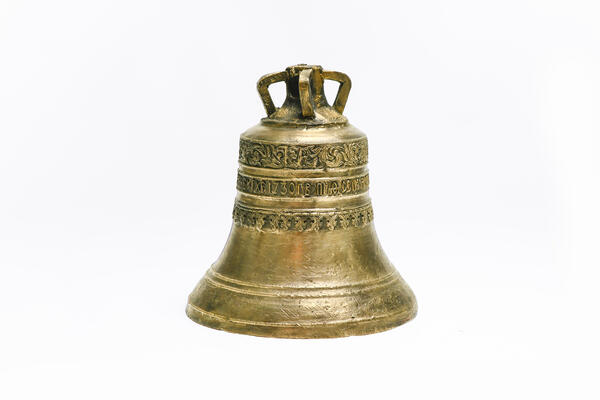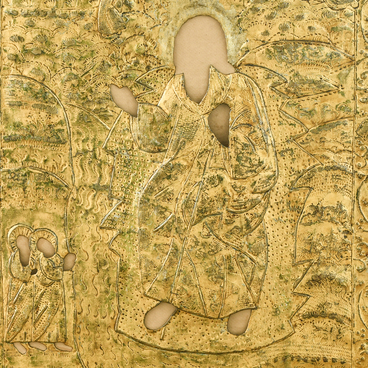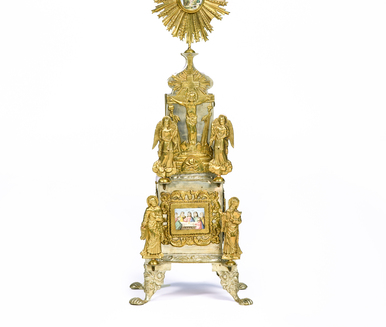Under it is a border with a shaped edge in the form of trefoils. At the bottom there are two more ornamental bands, not as wide as the upper one.
Bell ringing was used in Russia not only during divine services. It warned of fire, floods and enemy attacks. It was used to measure time, to gather people for assemblies, and to welcome honorable guests.
Among the church bells, there were four main, or canonical, bells. Church bell signalized the beginning of a service. A death knell was a funeral bell, which expressed sorrow for the deceased. The chime was played on all the bells in turn from the largest to the smallest ones. The festive bell ringing was the most complicated of all these types — it had a complex rhythm and many variations, depending on the occasion for which it was rung.
Bells were cast from a mixture of tin and copper; it was believed that such an alloy gave the clearest and loudest sound. The shape of the dome and the thickness of the side walls were also chosen so as to provide a strong, long and beautiful ringing. The outer walls of the bell were covered with gold or silver, ornamented with relief images of kings or saints, scenes based on historical events. Spiritual inscriptions and texts of prayers were also placed there.
Many folk signs and beliefs were connected with bells. Their ringing was believed to drive away evil and predict the weather: clear sound meant a sunny day, dull sound meant bad weather. If a bell broke, it was perceived as a sign of great misfortune: a future war, epidemic, or natural disaster.



